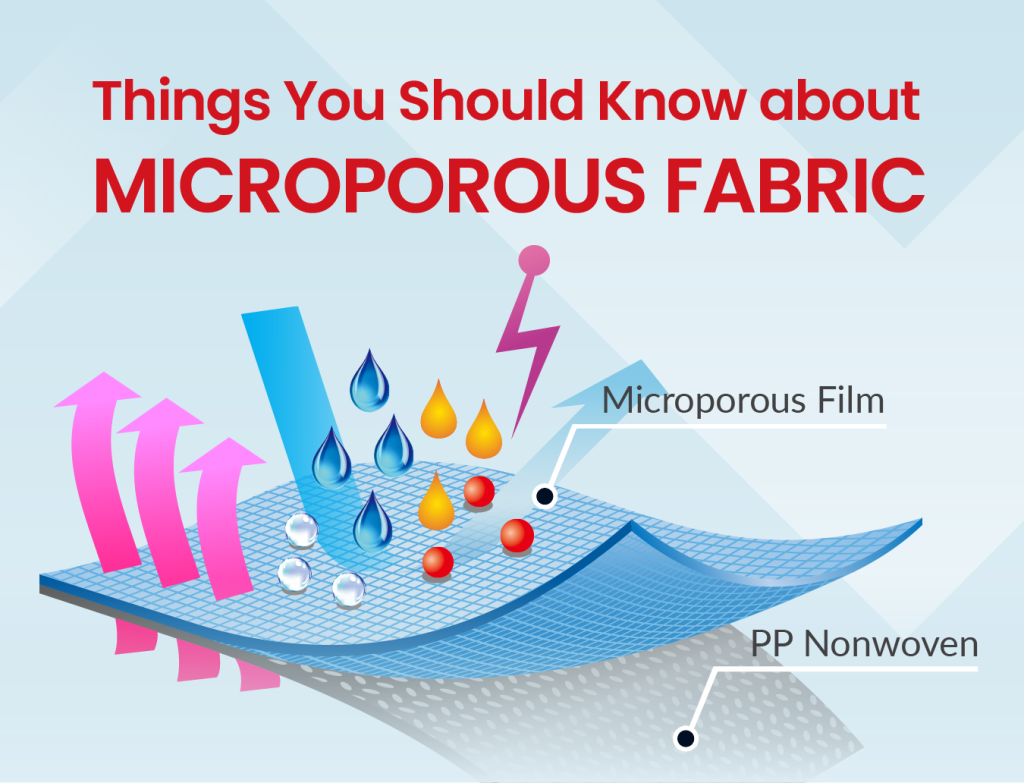Microporous fabrics have become increasingly popular in recent years due to their unique characteristics that make them both practical and versatile. The term “microporous” refers to a fabric that has very small openings that allow air and moisture to pass through, while preventing larger particles from getting in.

One of the most significant features of microporous fabric is its ability to provide protection against liquid and airborne hazards. The small pores in the fabric make it difficult for liquids and chemicals to penetrate its surface, making it an excellent choice for protective clothing, such as coveralls, aprons, and lab coats. In addition, microporous fabrics are also effective in preventing the spread of viruses and bacteria, which makes them ideal for medical applications, such as hospital gowns and face masks.
Another advantage of microporous fabrics is their breathability. The tiny openings in the fabric allow air and moisture to escape, which helps to regulate body temperature and prevent overheating. This makes microporous fabrics a popular choice for outdoor clothing, such as jackets and pants, as well as sportswear.
Microporous fabrics are also highly durable and resistant to wear and tear. They can withstand exposure to harsh chemicals and extreme temperatures without losing their protective properties or becoming damaged. This makes them an excellent choice for use in industrial and manufacturing environments, where employees are exposed to hazardous materials and conditions.
In addition to their protective and functional properties, microporous fabrics are also lightweight and comfortable to wear. They are easy to move in and provide flexibility and range of motion, which is important for individuals who work in active jobs. Moreover, they are soft and gentle on the skin, making them ideal for use in clothing for people with sensitive skin.
Microporous fabrics have a wide range of applications and are used in numerous industries, including healthcare, manufacturing, and outdoor wear. In the healthcare sector, they are used for protective clothing, such as microporous protective coveralls, face masks, and gloves, as well as medical devices, such as wound dressings and catheters.
In the manufacturing industry, microporous fabrics are used in protective clothing for workers who are exposed to hazardous materials, such as chemicals, pollutants, and dust. They are also used in filters, such as those found in air purifiers and vacuum cleaners, to trap small particles and prevent them from being released into the air.
In outdoor wear, microporous fabrics are used in jackets, pants, and other garments that provide protection against wind, rain, and other elements while still being breathable and lightweight. They are also used in sportswear, such as running shorts and shirts, to provide comfort and flexibility without compromising on performance.
Microporous fabrics have many features and uses that make them a popular choice in a variety of industries. Their protective properties, breathability, durability, and comfort make them ideal for use in clothing and other applications, where protection and performance are essential. As technology continues to improve, we can expect to see even more innovative uses for these versatile fabrics in the future.


